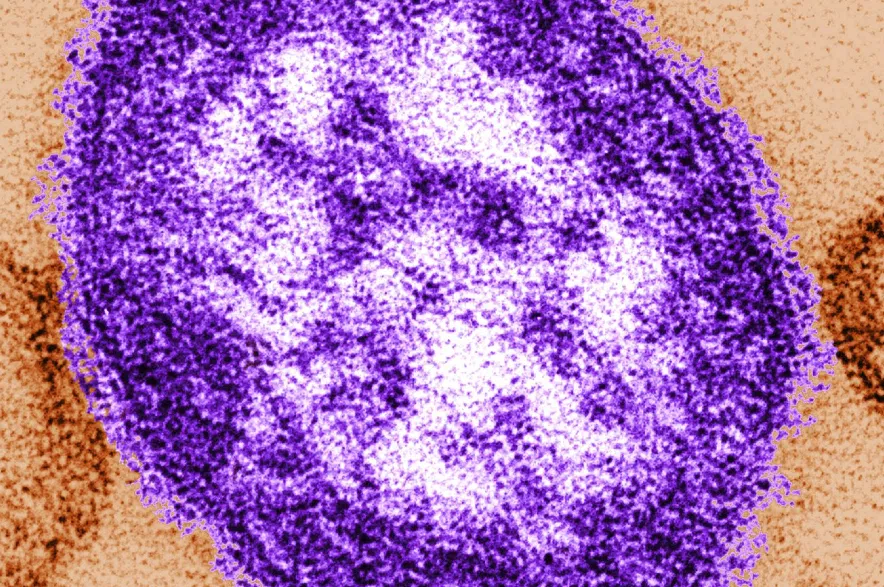Multiple exposures to measles in communities across Saskatchewan prompted a warning from Saskatchewan Health Authority (SHA) on Wednesday afternoon.
SHA said in a news release on May 14 that the latest confirmed cases were in Saskatoon, Swift Current, Outlook and Ponteix, and noted that anyone who was at the following locations listed below should monitor for measles symptoms for up to 21 days after exposure.
In Saskatoon, anyone who was at Rock Creek Grill on May 9 from 10:30 p.m. to 1 a.m. as well as Prairieland Park on May 9 to 11 from 8 a.m. to 10 p.m., may have been exposed to the virus. Other locations in the city include Saskatoon Home Inn and Suites on May 9 to 11 and Boston Pizza on Clarence Avenue South on May 10 from 6:30 p.m. to 10:30 p.m.
Read more:
- Saskatoon sees 30 overdoses in three days, prompting health ministry warning
- ‘Shortage of paramedics entering EMS as a career in Sask.’: SHA
- Sask. children’s hospital nurse fired after snooping on 314 patients
In Regina, anyone who was at the Co-op Gas Bar on Dewdney Avenue on May 4 from 4 p.m. to 8:30 p.m. should monitor for symptoms.
In Swift Current, there were two exposures on May 8. Cowtown from 1 p.m. to 4:30 p.m. and Walmart Supercentre from 3 p.m. to 6 p.m.
The exposure risk also applies to anyone in Gravelbourg who was at St. Joseph’s Hospital and Gravelbourg Family Pharmacy on May 7 from 7 a.m. to 9 p.m.
There was a confirmed case in Assiniboia that could affect anyone who was at Harvey’s Home Centre, Southland Co-op Gas Station and Southland Co-op Grocery store on May 3. Other exposures in Assiniboia on May 5 include the post office, B&A Petroleum, Co-op Hardware and Shoppers Drug Mart.
Anyone who was at the Dairy Queen in Outlook on May 9 from 2:30 p.m. to 4:30 p.m. is asked to monitor for symptoms.
In Ponteix, there was an exposure at the post office on May 8 from 12 p.m. to 3 p.m.
What are the symptoms of measles?
The SHA said that the symptoms of measles include fever, cough, runny nose, red eyes, fatigue, irritability (feeling cranky or in a bad mood), small, white spots (known as Koplik spots) inside the mouth and throat, and a red blotchy rash which develops on the face and spreads down the body about three to seven days after symptoms begin and can last four to seven days.
The SHA said anyone who has any of the listed symptoms and was at any of the listed locations during the identified times, should call HealthLine811, their primary care doctor or nurse practitioner.
Anyone in medical distress, should go to an emergency room or call 911, and identify they may have been exposed to measles.
The health authority also said that measles can be prevented by the safe, effective and free measles vaccine and with two doses, the vaccination is almost 100-per-cent effective.
“Immunization is your best tool against measles, and two complete doses is what you need to have full vaccination. One dose is not enough,” the SHA’s Dr. David Torr said recently.
“Once immunized, the measles vaccine is extremely efficient, over 90 per cent of protection both against actually getting the infection and certainly against getting any complications or even death from measles.”
The second dose is especially important for people born in or after 1970.
Measles is spreading worldwide and the World Health Organization has expressed concerns.
“Get yourself up to date with the immunizations,” Torr said. “Otherwise you’re not properly protected against measles — and it is here.”
To check your vaccination records, Torr said to check MySaskHealthRecord, and if you can’t find anything there to contact public health.
Why is measles dangerous?
Measles is highly contagious and can spread very easily by breathing contaminated air after an infected person coughs or sneezes, or by touching a contaminated surface such as a doorknob or a shopping cart.
In rare cases can lead to respiratory failure, swelling of the brain and death.
If anyone breathes the contaminated air or touches a contaminated surface and then touches their nose, eyes or mouth, they can become infected.
The virus can live up to two hours in the air or on surfaces in a space where an infected person coughed or sneezed.
It can spread to others from four days before a rash appears until four days after a rash develops. Through this period, people need to stay in strict isolation to avoid spreading the infection.
— with files from Canadian Press











